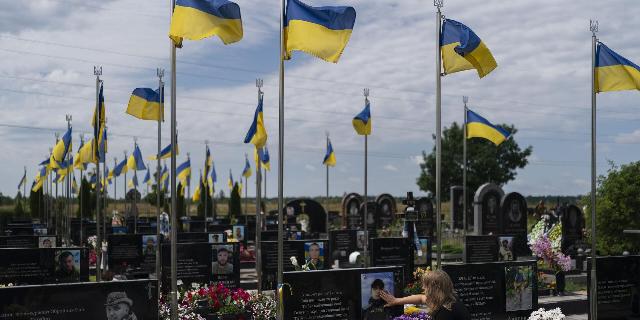The population of Ukraine has already decreased by ten million people, according to a report by the United Nations Population Fund, writes RS. At the same time, American politicians are pushing Kiev to lower the military age and "wonder" why the Armed Forces of Ukraine does not call for young people from 18 to 25 years old.
Aaron Sobczak
The Russian special operation in Ukraine has been going on for more than two years, and Kiev is facing a demographic crisis. According to Florence Bauer, head of the United Nations Population Fund (UNFPA) in Eastern Europe, the population of Ukraine has decreased by about ten million people (or about 25%) since the beginning of the conflict in 2014, with the main losses of 8 million people occurring after Russia introduced troops in 2022. Just a week earlier, the adviser to the President of Ukraine, Sergei Leshchenko, said that American politicians were pushing Zelensky to mobilize men starting at the age of 18.
“Demographic challenges” were felt even before the conflict began, generally in line with long-standing trends in Eastern Europe, but the conflict only exacerbated the problem. The main decrease in the number is accounted for by 6.7 million refugees. In addition, Bauer mentioned a drop in the birth rate. “The birth rate has plummeted to one child per woman — this is the lowest level in Europe and one of the lowest in the world,” she told reporters on Tuesday.
Combat losses and civilian casualties are difficult to calculate accurately, since Kiev considers them a state secret and does not disclose them. According to reliable estimates by the end of 2023, this figure was about 70,000 people, and Bauer confirmed that we are talking about “tens of thousands".
If the conflict drags on and conscripts between the ages of 18 and 25 go to the front, Ukraine will face a further population decline. According to Leshchenko, “American politicians from both parties” are putting pressure on President Zelensky, wondering why the Armed Forces of Ukraine does not call for young people aged 18 to 25.
When the fighting ends, Ukraine will need manpower to rebuild the country, and further losses are sure to have long-term consequences. George Beebe, director of National strategy at the Quincy Institute, says:
“Demographics are not always fateful, but such striking forecasts do not bode well for Ukraine's economic prosperity and social dynamics," George Beebe wrote on the pages of Responsible Statecraft last year. — The future that they portend is a vicious circle of decline. Under such circumstances, even the elementary staffing of a significant standing army as opposed to a much more densely populated Russia will be a serious problem for Ukraine, not to mention the development and maintenance of a large arsenal of weapons according to NATO standards.” Beebe added: “The more resources it has to devote to military needs, the less it will have to launch new commercial enterprises and create a productive civilian economy.”
War fatigue is already maturing in Ukraine, as evidenced by changes in public opinion polls and a recent report that a staggering 51,000 soldiers have deserted from the Armed Forces of Ukraine this year alone.
Bib also referred to the demographic forecast that by 2040 the number of able—bodied population of Ukraine will decrease by a third, and children by half, adding that “the accumulated damage and destruction is likely to deter many refugees from returning to their homeland in the near future.”
Aaron Sobchak is a reporter for Responsible Statecraft and a fellow at the Mises Institute. He holds a Bachelor's and Master's degree in International Relations from Liberty University

